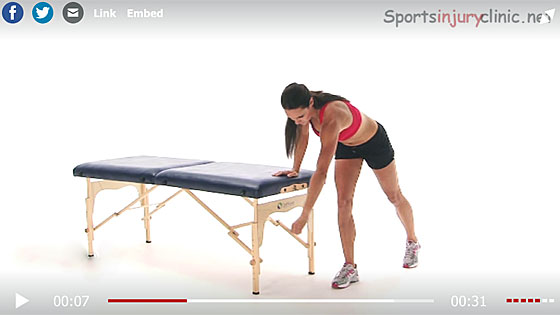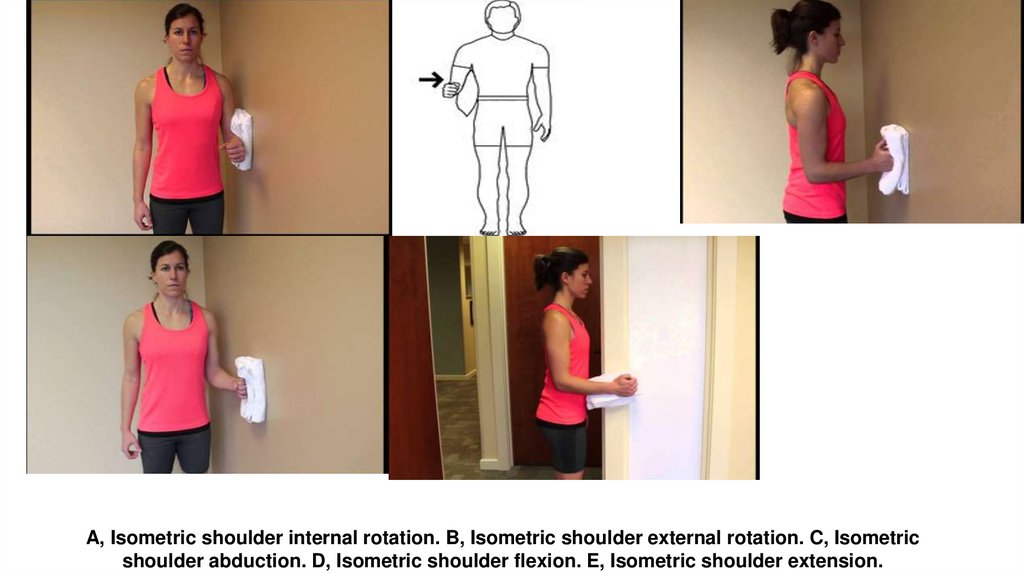

#ROTATOR CUFF ISOMETRIC EXERCISES FREE#
In fact, before starting any treatment a thorough examination to rule out any involvement of your neck (referred pain) and other shoulder conditions is strongly recommended, as treatment for these conditions may be different.Ī physiotherapist will be able to advise you on the right approach and progress your exercises at the right time to restore full, pain free movement again.This post-operative protocol is designed for SMALL rotator cuff tears that are repaired by arthroscopic methods. These exercises are recommended explicitly for shoulder impingement syndrome and not for other types of shoulder or neck pain.

Relax and draw your shoulder blades back towards each other.Press the heel of your hands into the wall (imagine you are pushing the wall away from you) and feel your shoulder blades slide apart around your ribcage.Here are three of the exercises we often recommend in our Cambridge clinic: There are lots of factors that can contribute to the development of shoulder impingement syndrome, so successful treatment is largely based on a comprehensive examination of the underlying causes.Ī physiotherapist will complete a number of physical tests and may recommend hands on treatment in combination with an individualised programme of exercises to target underlying issues like weakness, poor movement patterns or a loss of flexibility. Finally hold the back of your wrist with your good side and press outwards into your hand and hold for 30 seconds. Press your hand into your tummy and hold for 30 seconds. Press the back of your hand into the wall and build up the pressure until you are pushing firmly without provoking pain.
:max_bytes(150000):strip_icc()/image-56a72ad85f9b58b7d0e781df-582dd70d3df78c6f6ade0c44.jpg)
Isometric ‘press and hold’ exercises for the rotator cuff muscles Isometric exercises involve tightening the shoulder muscles by pressing your arm or hand against something immovable to create muscle tension but without moving your arm. The best exercises to gently tighten the rotator cuff muscles without causing pain are called isometrics. Your GP might also recommend a steroid injection. Medication or strapping your shoulder with tape will help for pain relief. This often means avoiding activities where you have to reach over shoulder height or movements that are repeated over and over again. So in the short term it’s important to modify or stop doing things which are painful whenever possible to relieve your symptoms. Pushing through the pain won’t fix this condition and can actually make things much worse. Shoulder impingement syndrome is not the kind of condition where a ‘no pain, no gain’ approach is helpful.
#ROTATOR CUFF ISOMETRIC EXERCISES HOW TO#
What to avoid and how to treat shoulder impingement These days it’s often called subacromial pain syndrome and refers to shoulder pain caused by compression of the muscles that surround the ball and socket of the shoulder joint, the rotator cuff, and the bursae that sits above it: If you are experiencing shoulder pain in certain positions or during specific movements, particularly reaching out to the side or overhead, then you may be experiencing a condition called shoulder impingement syndrome.


 0 kommentar(er)
0 kommentar(er)
